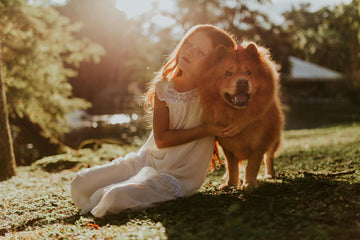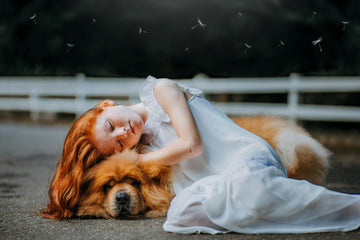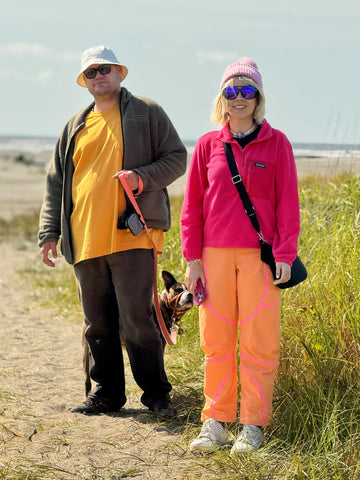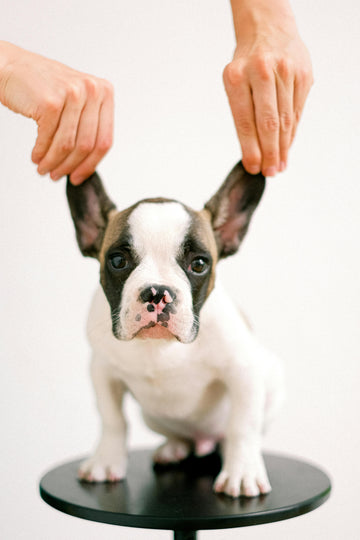Dogs have many quirky behaviors, but few are as universally recognized—and often misunderstood—as licking. Whether it's a quick slurp on your hand, a full-face smooch, or a constant obsession with your feet, many pet owners find themselves asking: "Why does my dog lick me so much?"
Licking is a natural and instinctive behavior for dogs. But when it becomes excessive or seemingly out of context, it can leave pet parents puzzled or even annoyed. Is it affection, anxiety, hunger, or something else entirely?
1. The Evolutionary Roots of Dog Licking
1. How Wolves Influenced This Behavior
In the wild, wolf pups lick their mothers’ mouths to encourage regurgitation of food. This natural behavior strengthens social bonds and is still seen in domestic dogs.
2. Puppies Learn Early
Mother dogs lick their newborns to clean them and stimulate breathing. Puppies, in turn, learn to lick as a way to communicate.
3. Licking Is a Form of Canine Communication
Among dogs, licking can mean submission, respect, or playfulness. Dogs often carry these communication habits into their human relationships.

2. Reasons Why Your Dog Licks You So Much
1. Affection and Bonding
Just like tail wagging or cuddling, licking is often a dog's way of saying, "I love you."
Signs this is affection:
✔️ Tail wagging and relaxed body
✔️ Licking during quiet bonding moments
✔️ Eye contact followed by a lick
2. and Smell
Human skin is salty, and your dog may simply enjoy the taste. Lotions, soaps, and even sweat can attract curious tongues.
3. Attention-Seeking
Dogs quickly learn that licking gets a reaction. Whether you laugh, pet them, or even push them away, it's attention—and that’s rewarding for them.
4. Anxiety or Stress Relief
Licking releases endorphins in dogs, which can create a calming effect. Dogs with separation anxiety or high stress might lick excessively to self-soothe.
Other signs of anxiety:
✔️ Whining or pacing
✔️ Destructive behavior when left alone
✔️ Panting or drooling
5. Obsessive-Compulsive Behavior
In some cases, excessive licking (of you, themselves, or objects) might be linked to OCD-like tendencies in dogs.
6. Hunger or Food Association
If your dog tends to lick before mealtime or while you’re eating, they may associate you with food.
7. Submission or Respect
Lower-ranking dogs often lick higher-ranking pack members. Your dog might see you as the leader and lick you as a sign of respect.
8. Habit or Boredom
If your dog is left alone a lot or doesn’t get enough mental stimulation, licking may be a way to pass the time.

3. Common Places Dogs Lick and What They May Mean
1. Face
Usually a sign of love, recognition, or a greeting.
2. Hands
You use your hands to feed, pet, and interact, making them a prime licking target.
3. Feet and Legs
Your feet have sweat glands and a unique scent. Dogs might also lick their legs after a shower due to the moisture and lotion.
4. Ears
Some dogs are drawn to the smell and taste of earwax (yes, it’s gross but normal). It can also be a sign of grooming behavior.
4. When Dog Licking Becomes a Problem
1. It Becomes Excessive
If your dog won’t stop licking you—even interrupting play or sleep—it could point to behavioral or medical issues.
2. Skin Irritation or Injury
Excessive licking can cause hot spots, infections, or raw skin on you or your dog.
3. Accompanied by Other Symptoms
Licking along with vomiting, lethargy, or loss of appetite may point to a deeper health issue.
4. Obsessive Licking of Themselves
If your dog licks paws, belly, or legs obsessively, check for allergies, wounds, or anxiety-related behaviors.

5. How to Discourage Excessive Licking (Without Hurting Your Dog’s Feelings)
1. Redirect the Behavior
Offer a chew toy or puzzle feeder when the licking starts. Give positive reinforcement when they redirect successfully.
2. Ignore the Behavior
If your dog licks for attention, withdrawing attention can help curb the habit. Don’t speak, touch, or make eye contact.
3. Train "Stop" or "Enough"
Use a consistent command to discourage licking. Reward compliance with praise or a treat.
4. Increase Exercise and Mental Stimulation
Tired dogs are less likely to develop habits like obsessive licking. Add more playtime, walks, or training sessions.
5. Use Deterrent Lotions (for Hands and Feet)
There are safe, vet-approved sprays that taste unpleasant but don’t harm your dog. These can help discourage persistent licking.
6. Visit the Vet if Needed
If nothing seems to work or if the licking is accompanied by symptoms like hair loss or redness, consult your vet. They may check for allergies, skin conditions, or neurological issues.
6. Tips for Healthy Licking Boundaries
✔️ Set clear rules. If you’re okay with occasional kisses but not constant licking, be consistent.
✔️ Teach alternative behaviors like sitting calmly or playing with a toy instead.
✔️ Offer praise for calm behavior and redirect overstimulation.
✔️ Make sure all family members are on the same page about what’s allowed.
7. Fun Facts About Dog Licking
✔️ Dog saliva contains enzymes that promote healing, though it’s not sterile.
✔️ Puppies learn social behaviors (like licking) by the time they’re just a few weeks old.
✔️ Wolves and wild dogs also lick pack members to strengthen bonds and promote unity.
✔️ Some dogs lick the air when excited or anxious—this can be related to obsessive behavior.

Conclusion
When your dog licks you, they’re usually saying something. It could be love, boredom, or even a signal of stress. By tuning into the context, body language, and frequency of the behavior, you can understand your dog better and decide whether to enjoy the affection or gently set boundaries.
The next time your dog gives you a slobbery kiss, smile and know that behind that wet tongue is a world of canine communication waiting to be understood.

FAQs
1. Is dog licking safe for humans?
Generally, yes, but avoid letting your dog lick open wounds or your mouth due to bacteria.
2. Can licking be a sign of illness?
If excessive or paired with other symptoms, licking may point to allergies, stress, or pain.
3. Why does my dog lick me and then stop suddenly?
It could be that their curiosity was satisfied, or they were distracted by another stimulus.
4. Is licking a form of dominance?
Not usually. Licking more often signals submission or affection rather than dominance.
5. Can I train my dog to stop licking altogether?
You can manage the behavior and reduce frequency through training, redirection, and setting boundaries.







